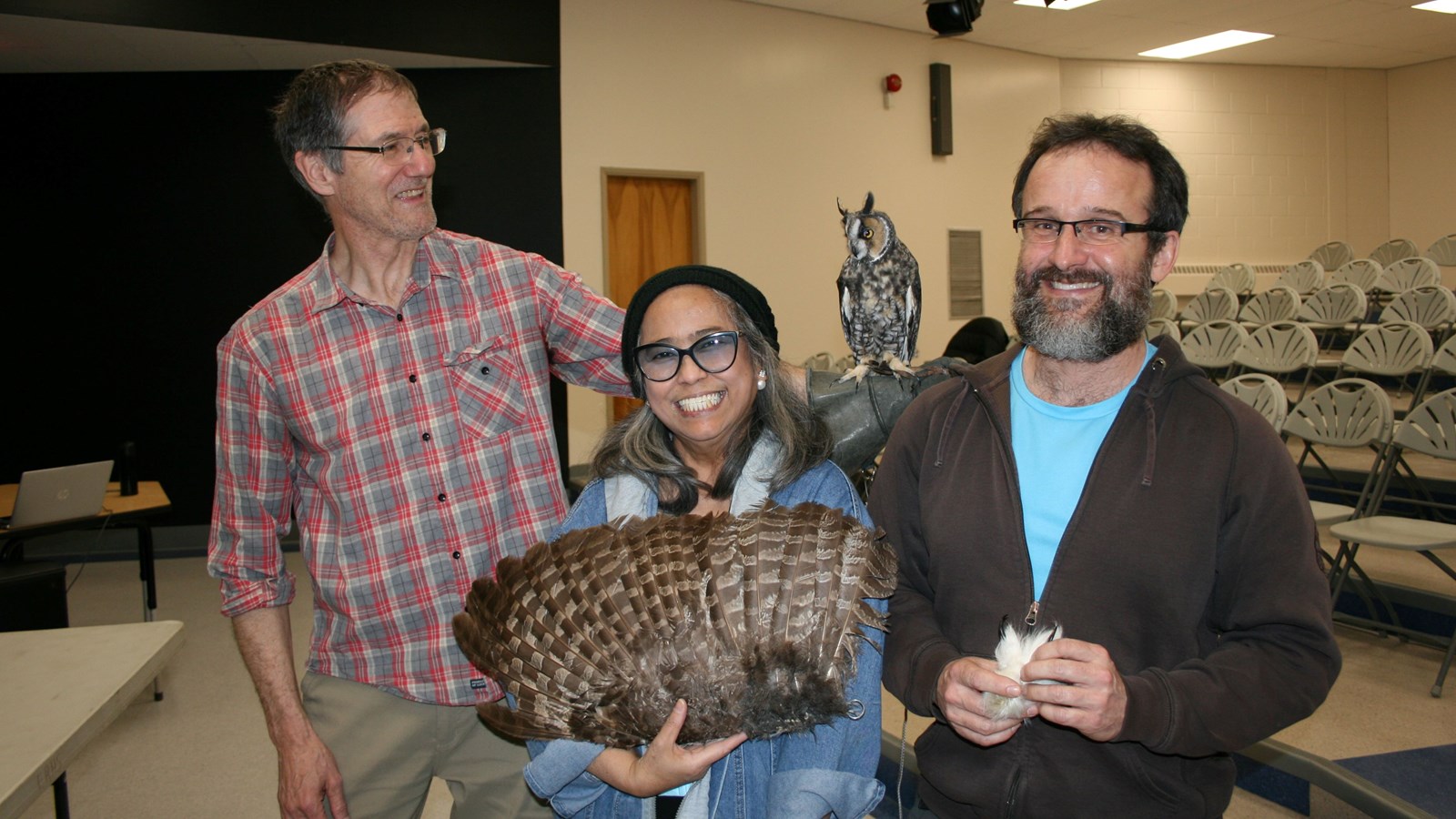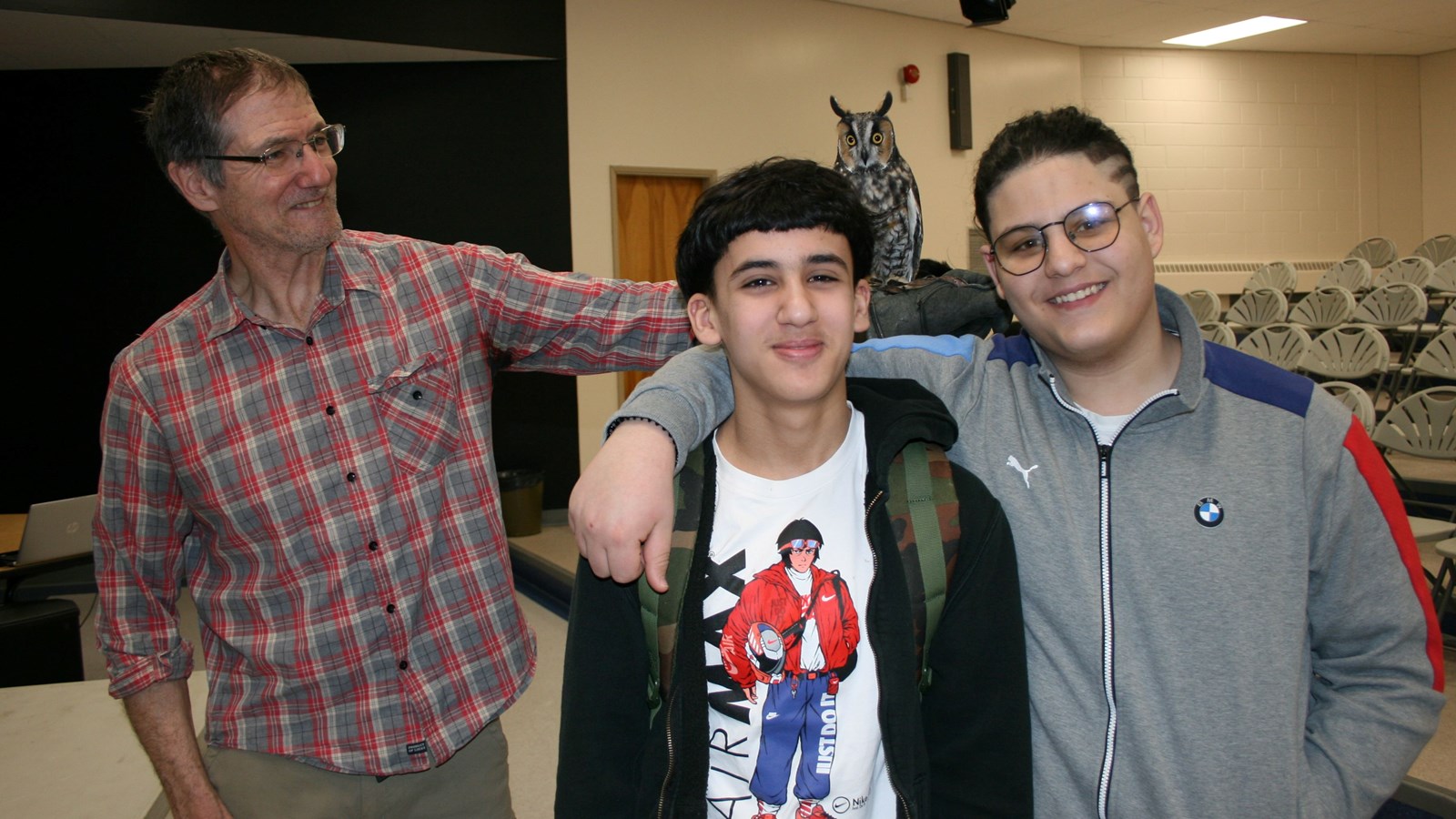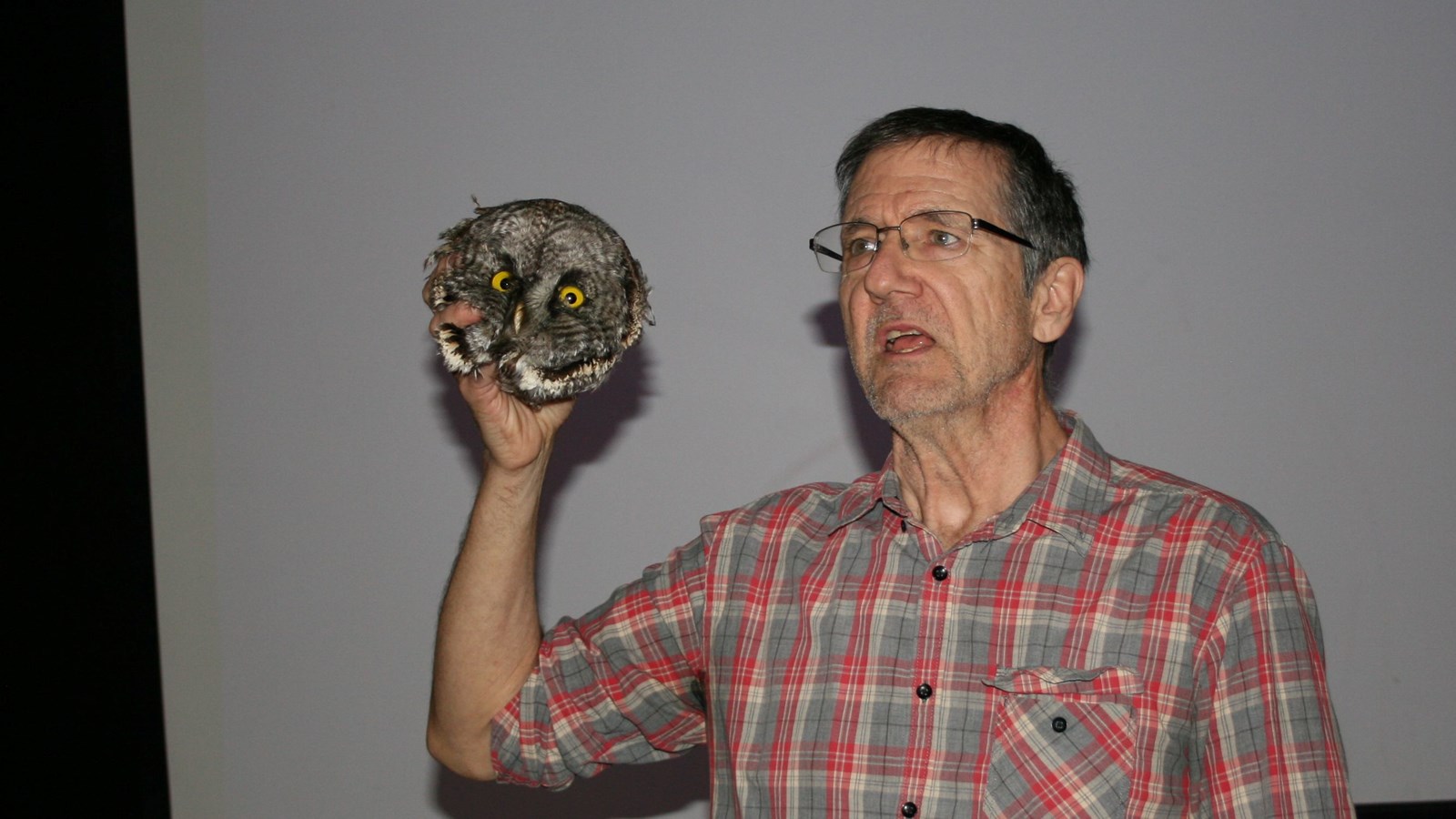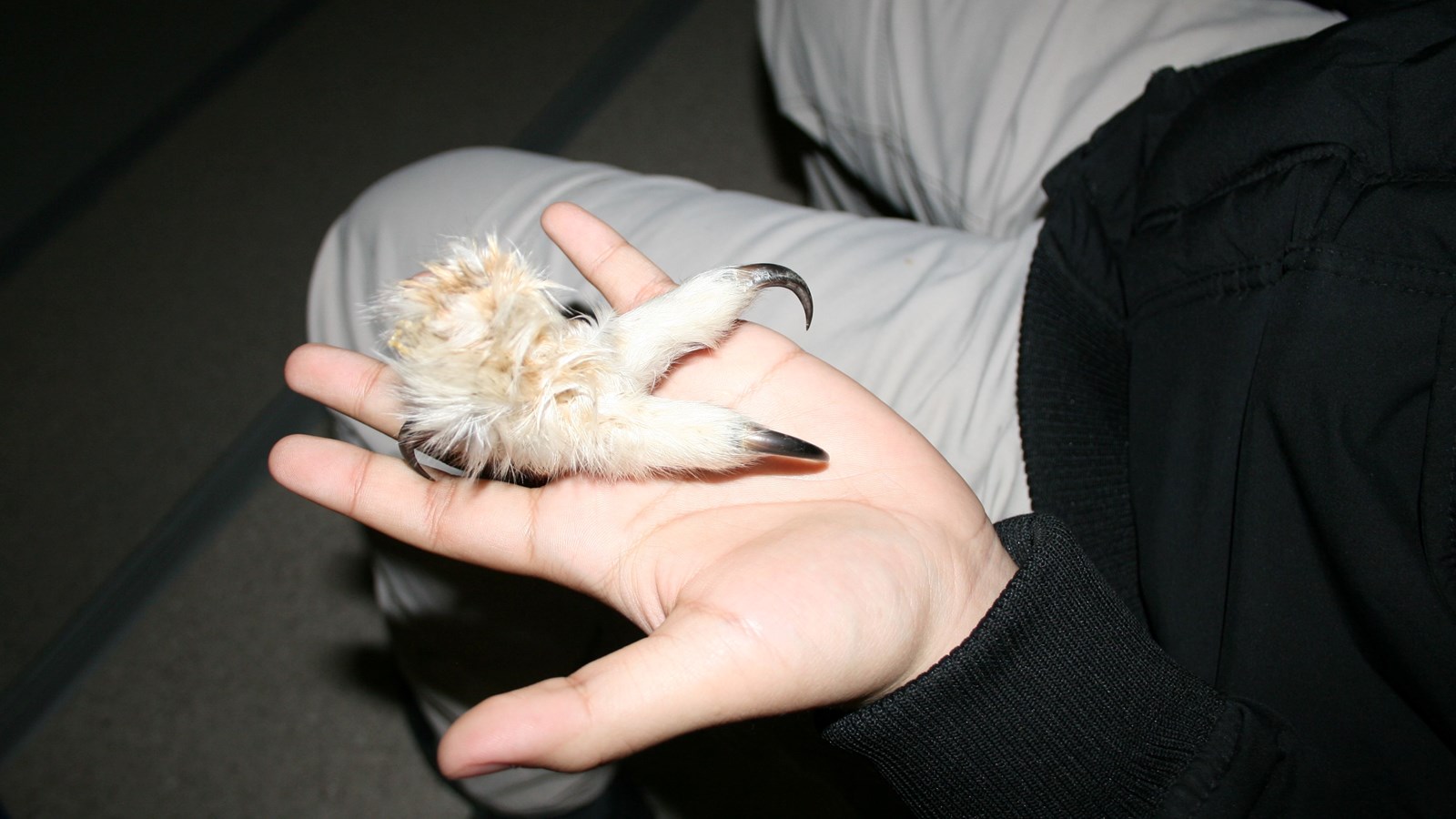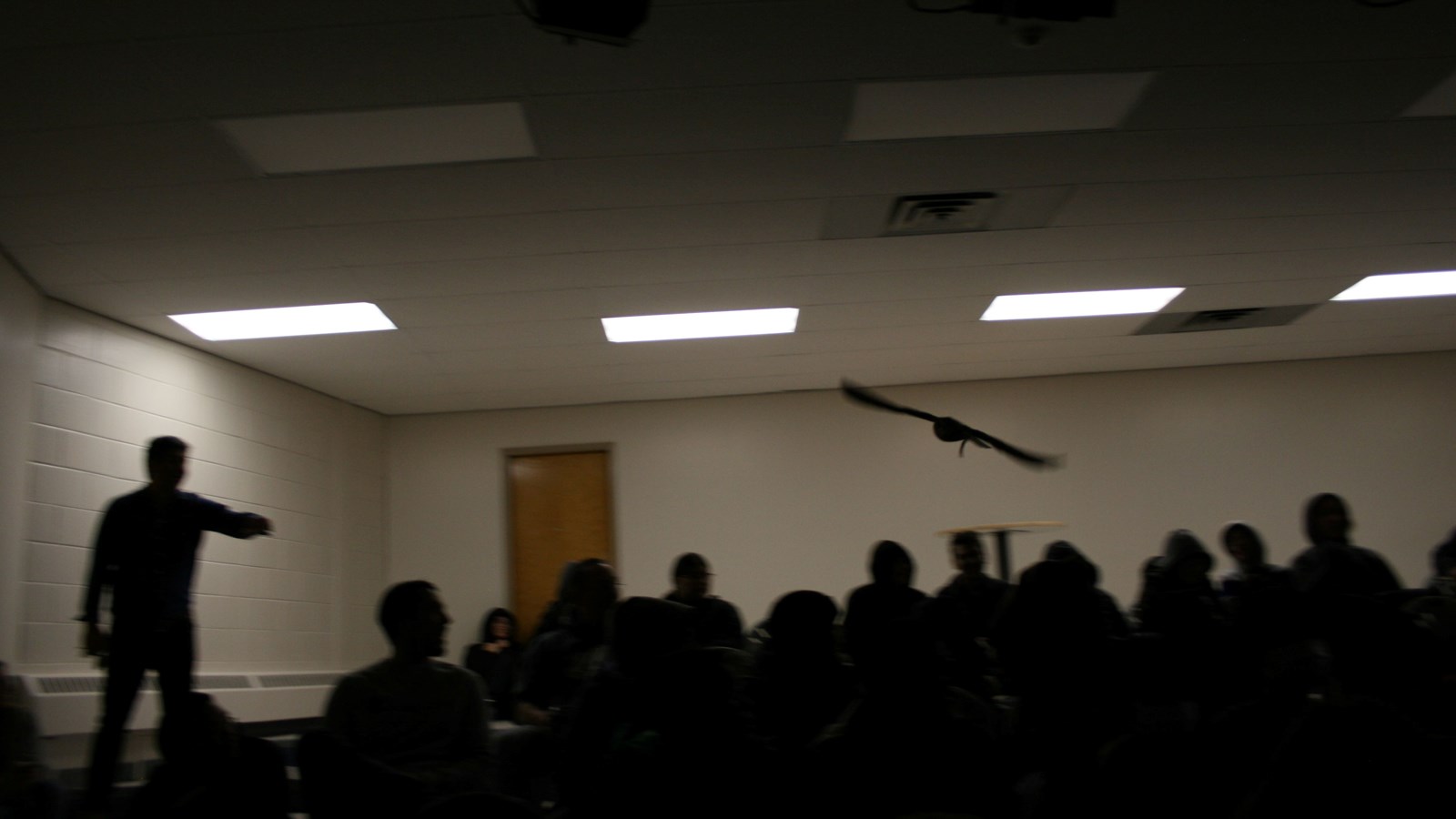Hugh John MacDonald discover owls
March 24, 2023 News Story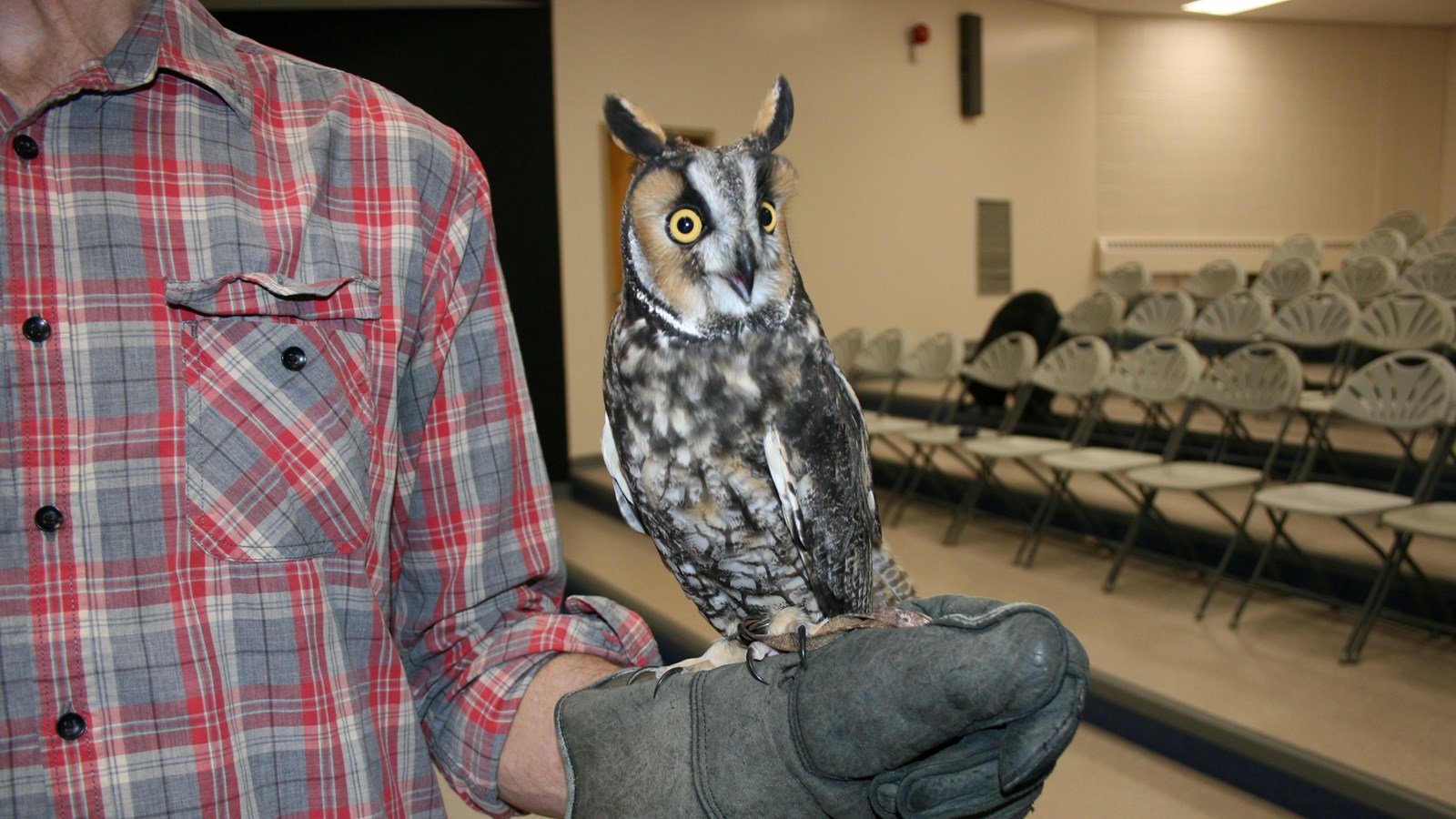
Hugh John Macdonald School students got wise to owls this week.
Dr. James Duncan of Discover Owls visited the junior high school on March 22, along with Rusty, a long-eared owl. Duncan told the students owl about owls, including how they see, hear, fly, mate and hunt.
In addition to Rusty, Duncan showed Grades 7, 8, and 9 students the owl body parts he’s collected during his career as a biologist and zoologist, including the head of a great grey owl, the provincial bird of Manitoba.
“If you look at the head of the great grey owl and the head of Jim Duncan, you’ll see that we have the same size eyeballs,” said Duncan during his presentation.
“That’s remarkable because I weigh 180 pounds and this bird weighs between two to three pounds. An owl’s eyes make up half of its head. If we had eyes that big it would be like if I had grapefruits for eyes.”
Like humans, owls have binocular vision, meaning two eyes capable of facing the same direction to perceive a single 3D image. That said, unlike humans, Duncan said some owls can turn their heads up to 540 degrees!
Another interesting owl fact Duncan delivered was that Rusty’s long ears are not really ears at all.
“Rusty is called a long-eared owl, but that’s based on the feathers that stick out of her head that look like ears,” Duncan said.
“Her actual ear openings, one is up high, and one is down low. They are asymmetrical or tilted. That’s important for owls to be able to pinpoint a sound from the left or right, up or down, at the same time.”
HJM teacher Gigi Fallorin said her Grade 7 students are studying different ecosystems and predator-prey relationships in their science class.
Mo Hasan, a Grade 7 student, said he and his classmates were tasked with opening owl pellets and using a bone chart to identify what they found inside.
“I found three skulls. It was cool,” Hasan said.
Owl pellets are the regurgitated undigested parts of an owl’s food.
“What happens is the owl’s stomach acid dissolves all the soft parts, the eyeballs, the brain, the skin, the muscle tissue, the intestines, and that forms a delicious mouse soup that goes through the intestines,” Duncan said.
“The other stuff, the fur, the bones, the teeth, the claws, that all gets squeezed into something called an owl pellet. About eight hours after every meal, the owl has to barf.”
After his talk, Duncan let Rusty fly around the room, much to the excitement of the students.
“I thought it was going to land in my hair, but thankfully it didn’t,” said Abdul Aziz, a Grade 7 student. “It was cool when it was flying around. It was a good experience.”

